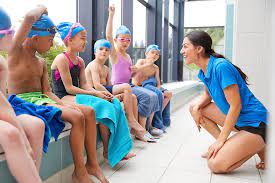Why Water Safety is More Than Just Learning to Swim
Australia is surrounded by water. From backyard pools and surf beaches to rivers and creeks, water plays a massive part in our lives. But water, as fun and refreshing as it is, can also be dangerous—especially when we forget the basics. Every year, Australians of all ages are affected by preventable drowning incidents. That’s where a good water safety course can make all the difference.
Whether you’re a parent, teacher, coach, or community leader, understanding the four key water safety messages isn’t just useful—it’s lifesaving.
1. Supervise—Always Keep Watch
Drowning can happen in seconds. It’s quiet. It’s fast. And it often happens when no one is watching.
The first rule in water safety is supervision. Active supervision means more than just being nearby. It’s about being present, alert, and within arm’s reach—especially for young children or weaker swimmers. Even confident adults can get into trouble unexpectedly.
Real-life example: In 2022, a toddler in suburban Brisbane was saved from a near-drowning thanks to a neighbour who noticed the child alone near a backyard pool. A quick response and CPR made the difference. But many aren’t as lucky.
Tip: At social gatherings, assign a designated “water watcher.” Rotate every 15 minutes so supervision remains fresh and focused.
2. Restrict—Create Barriers to Water
One of the most effective ways to prevent unsupervised access to water is through physical barriers.
That means installing pool fencing that complies with local laws, using self-latching gates, and removing furniture or climbable objects near fences. This doesn’t only apply to backyard pools—portable pools, ponds, and even water tanks pose risks.
According to the Royal Life Saving National Drowning Report 2023, over 30% of child drownings occurred in backyard swimming pools. Most were preventable.
Barrier checks should be regular. Gates sometimes fail. Latches wear out. Staying vigilant with physical safety is a non-negotiable part of water safety at home.
3. Teach—Build Water Safety Skills Early
Enrolling in a water safety course is one of the smartest decisions families, schools, and communities can make. It goes far beyond basic swim strokes.
Good training introduces children to survival techniques, safe rescue skills, and the ability to assess risks. For adults, courses refresh their knowledge and build confidence in supervising, responding, or intervening safely.
Whether you’re in a remote area or a coastal suburb, access to a certified water safety course can provide the practical and mental tools needed to handle emergencies. From floating and treading water to learning how to assist someone in trouble without putting yourself at risk—it all counts.
Enrolment in a recognised water safety course can be the turning point between a close call and a tragedy.
4. Respond—Learn How to Act in an Emergency
Even with the best precautions, accidents can still happen. That’s why knowing what to do in the critical first few minutes is essential.
Every second counts. That’s why learning basic rescue techniques and CPR is crucial. First aid courses are widely available across Australia, and many water safety programs include CPR training.
Example: A teenager in NSW saved his younger sibling after a river accident by performing CPR—training he received just months earlier in school.
First response isn’t just about the person in danger. It’s also about ensuring your own safety. Untrained rescuers often become victims themselves. A good water safety course teaches both intervention and self-preservation strategies.
Bringing It All Together: Safe Water Starts with Awareness
The four water safety messages—Supervise, Restrict, Teach, Respond—aren’t abstract ideas. They are clear, actionable habits. Habits that save lives.
You don’t need to live near the ocean for this to apply. Water safety is just as important for regional families, outback communities, and urban schools. Any place with a pool, dam, or bath is a place where drowning prevention matters.
A proactive approach means:
- Constant, mindful supervision
- Proper fencing and barrier checks
- Enrolling in a reputable water safety course
- Keeping CPR and rescue skills sharp
Australia’s warm climate and active lifestyle make water a constant feature in daily life. Make sure it’s a safe one.
Final Thought
Water safety isn’t a seasonal concern—it’s a year-round responsibility. Whether it’s about keeping your children safe, preparing your students, or just building personal confidence, embedding the four key water safety messages into daily life is a step in the right direction.
Want to improve safety in your home, school, or community? Consider taking a certified water safety course and empower yourself with practical, life-saving skills.
Remember: the right knowledge, delivered at the right time, can save a life.

